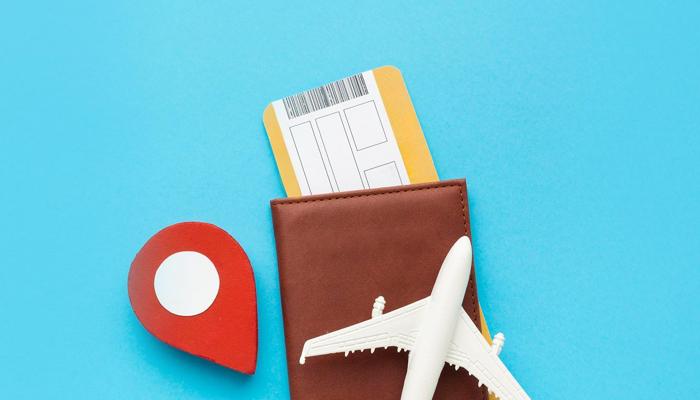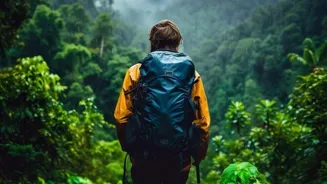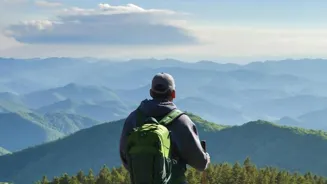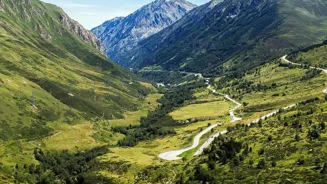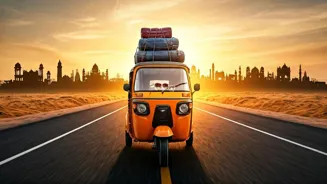Navigating Language Barriers in India: Tips for Effective Communication. Discover strategies to enhance your travel experience
India, a land of vibrant cultures and breathtaking landscapes, attracts travellers
from across the globe. However, with its diverse tapestry of languages, communication can sometimes feel like navigating a maze. Fear not, intrepid traveller! Bridging these language gaps is easier than you think.
It's all about a little preparation, a lot of patience, and a willingness to embrace the beauty of non-verbal communication. Knowing a few key strategies will make your Indian adventure smoother and more rewarding. This article gives some helpful ideas to overcome communication problems in India.
Learning basic Hindi phrases and respectful communication are key for travel
One of the easiest and most appreciated actions is learning a few basic Hindi phrases. "Namaste" for hello, "Shukriya" for thank you, and "Kitna hai?" for how much are the top three. These simple expressions can do wonders to show respect for the local culture and encourage people to assist you.
Many apps and online resources offer quick language lessons focusing on common travel phrases. Beyond Hindi, remember that English is widely spoken especially in tourist areas and bigger cities. Don't hesitate to ask if someone speaks English, and be polite and patient if they can speak a little.
Clear and simple English is best,avoid using very complex words or idioms that might not be easily understood. Also, write down key phrases or translation on your phone or a notepad.
This can be incredibly useful when phone network is not available or when you need to show a taxi driver your destination. Having a physical copy can be more reliable than electronics can. Remember that respectful communication is the key. Be genuinely interested in connecting with locals.
This sincerity will go a long way in bridging any language gap.
Non-verbal cues enhance communication; observe and adapt in India
Non-verbal communication is your best friend when words fail you. Gestures, facial expressions, and body language can convey a surprising amount of information. A smile is universally understood, and a nod can confirm understanding. Use hand gestures to indicate numbers, directions, or sizes.
Pointing can be helpful but ensure it is done politely. Be aware of cultural differences. For example, avoid using your left hand when offering something, as it is considered unclean in many parts of India.
Eye contact is generally appreciated, but avoid staring intensely, as it can be seen as rude. Pay attention to how locals communicate non-verbally and try to mirror their behaviour.
You will catch on quickly and find that you can communicate more effectively than you thought possible without speaking the same language. By using visual cues while traveling, you can communicate well. It eliminates most of the language issue you encounter.
Embrace the opportunity to observe and learn new forms of expression in India. This practice helps create a more rich and meaningful experience during the trip.
Translation apps are essential for travelers, offering real-time and offline translations
Technology is the modern traveller's greatest asset. Translation apps like Google Translate or Microsoft Translator can be lifesavers. They allow you to type in a phrase in your language and get a real-time translation in Hindi or another local language.
Many apps also offer offline translation capabilities, which are invaluable when you have limited access to the internet. Image translation is another useful feature. You can just point your phone's camera at a sign or menu, and the app will translate the text for you.
Make sure to download the required language packs before you begin your trip to avoid any dependency on internet access. Also, consider purchasing a local SIM card with a data plan. It will allow you to access online translation tools, maps, and communication apps whenever you need them.
Before using the translation application verify its credibility and accuracy to minimize miscommunication. Understand the proper way to use the functionality of a translation app to get accurate results.
Carry a phrasebook for effective communication while traveling
Carry a pocket phrasebook tailored to your destination. These are cheap and easy to find. Instead of just storing the phrasebook in your bag, keep it with you. It's more helpful than your phone in a few instances.
Phrasebooks usually contain common words and phrases related to transportation, food, and accommodation. Some even include basic grammar information. Practice using the phrases before your trip so you can pronounce them correctly and confidently.
Combining a phrasebook with a translation app is a great way to maximize your communication abilities. If you struggle with pronunciation, try playing the audio recordings that many phrasebooks offer. Don't be afraid to use your phrasebook, even if you're not perfect.
The effort to speak in the local language will be appreciated, and you'll be surprised how much easier it is than you think. In addition to phrases, write down important information like your hotel address, phone number, and any dietary restrictions.
This will be useful in case you need to ask for help.
Seek help from locals for English translation; be polite, patient, and clear in communication
Seek help from locals who speak English to translate. Many Indians, especially in tourist areas, have some level of English proficiency. Don't hesitate to ask for assistance from shopkeepers, hotel staff, or even fellow travellers. Be polite and explain your situation clearly.
Often, people are happy to help you understand instructions, negotiate prices, or find your way. Look for younger people, as they are more likely to have learned English in school. Remember that people may not always understand you perfectly. Be patient and repeat yourself if necessary.
Also, be aware of regional accents and dialects, which can vary greatly across India. Don't be afraid to use gestures or write down what you need. You can also try asking someone to write down the phrase in Hindi so you can show it to others who don't speak English.
Don't just always point around instead ask people properly as they are more than willing to help you.
Patience and positivity bridge language gaps while traveling
Patience and a positive attitude can go a long way in bridging the language gap. When faced with a communication barrier, take a deep breath and remind yourself that it's all part of the adventure. Instead of feeling frustrated, embrace the challenge as an opportunity to learn and grow.
Be willing to laugh at misunderstandings and don't take yourself too seriously. Remember that most people are kind and helpful, and they will appreciate your efforts to communicate with them.
Even if you can't speak the same language, you can still connect with people through a smile, a gesture, or a shared experience. Traveling in India is not just about seeing the sights, it's about connecting with the people and culture.
When communication gets tough, be patient and kind, you'll find most people will be helpful in return. Consider how you can be more understanding and encouraging. With these you will have fun, without being stuck when traveling.
AI Generated Content. Glance/InMobi shall have no liability for the content